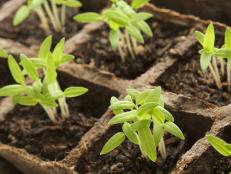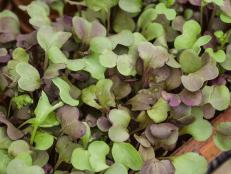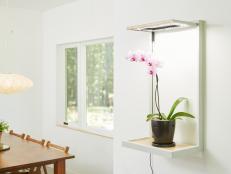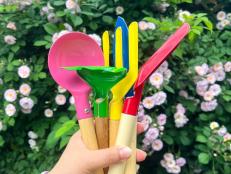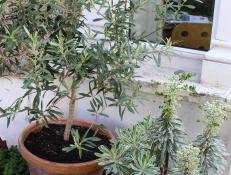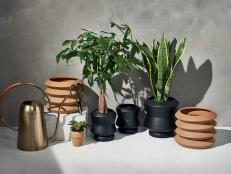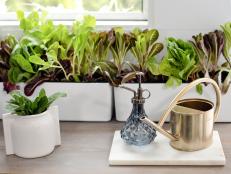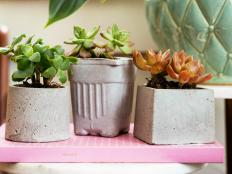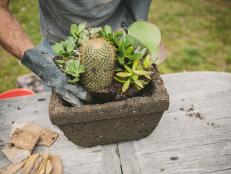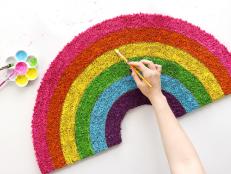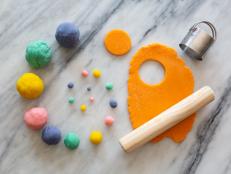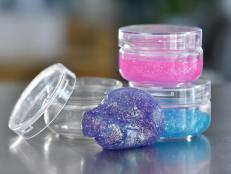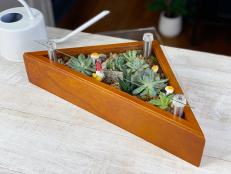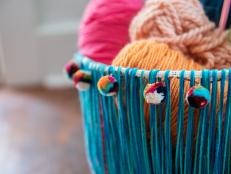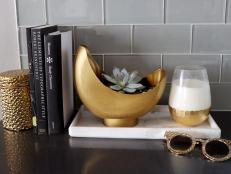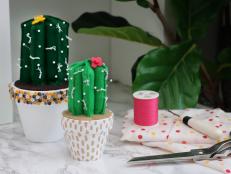Make a Shower Caddy Garden
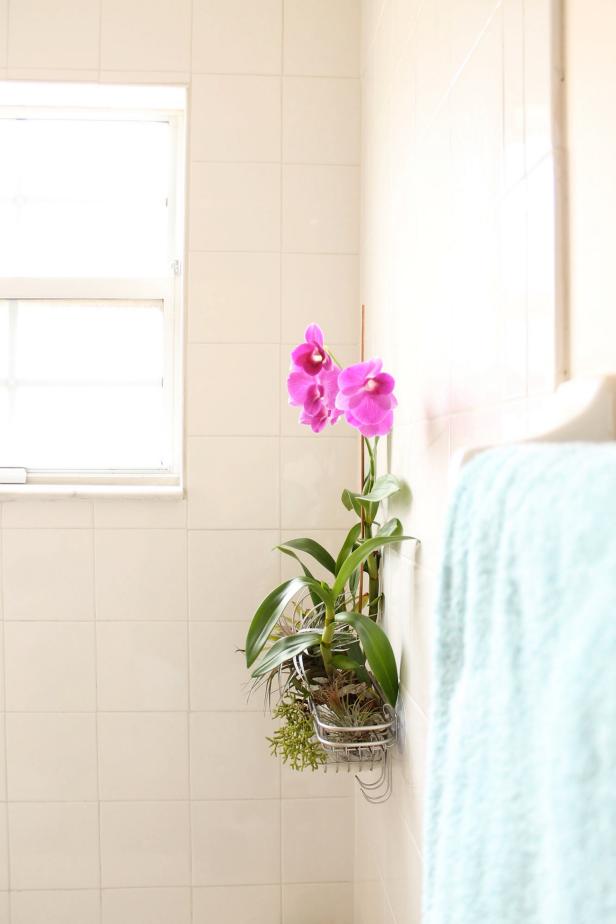
Image courtesy of Cool Springs Press
Anyone can give flowers in a vase. And anyone can make a shower caddy garden. What kind of Valentine's Day gift giver are you?
"Just imagine: Your loved one braves the frigid winter weather after a stressful day at work and makes a beeline to the bathroom for a hot bath," says Steve Asbell, author of Plant by Numbers: 50 Houseplant Combinations to Decorate Your Space (Cool Springs Press), coming out March 1. "There they discover their run-of-the-mill bathroom has been transformed into a tropical spa, complete with a hanging garden of fragrant and exotic flowers. Cut flowers only stay fresh a few days, but your living bouquet will stay in bloom for months and live for years."
Here's what you need:
- 1 wire shower caddy
- Orchid bark (or sphagnum moss)
- 1 plastic loofah
- 1 orchid
Optional: air plants, bromeliads, etc.
According to Asbell, the orchid adds a romantic feel and fragrance. "My personal favorite is Oncidium 'Sharry Baby', which has an aroma that some compare to chocolate and others liken to lemon meringue," he says. "The reason this works is that each of the plants included are epiphytes, or plants that naturally grow on the bark of trees. All they need for soil is orchid bark or sphagnum moss."
Shower Caddy Garden How-To
See All PhotosHere's what you do:
Step One: Using a pair of sharp scissors, cut into the plastic loofah where it bunches together and unravel the netting. You will use this to line your shower caddy and wrap the orchid’s roots.
Step Two: Now it’s time to knock the orchid out of its pot, but first you should water the orchid to help the roots loosen their grip. If the orchid is in a plastic pot, squeeze it from different angles while you gently twist and tug at the orchid’s base.
Step Three: Once the orchid is out of the pot, wrap one layer of the loofah netting around the sides of the orchid’s roots and another layer around the base.
Step Four: Line the caddy with loofah netting so that the bark will not fall through the gaps. If you have a hard time keeping it in place, use twist ties or wire for now and remove them when finished.
Step Five: Place the lined orchid into the lined caddy. To keep it from toppling over, use a thin piece of the loofah or a twist tie to loosely tie the orchid’s stem to the caddy. Don’t tie it too tightly, since it could damage the plant.
Step Six: Now you can add other plants to the caddy. Hold the plant in place and start filling the area around the roots with orchid bark. Air plants (tillandsia) need their roots exposed in open air, and can either be attached to the caddy itself or placed on the surface of the orchid bark.
Step Seven: Water the plants in the caddy, moisten the suction cups and attach it to the wall.
Care Tips
- Expose the caddy to bright light.
- Warm temperatures work best.
- Splash the orchid bark while showering.
- Spray the plants with diluted orchid fertilizer occasionally.
- Avoid getting soap or chemicals on the plants.










